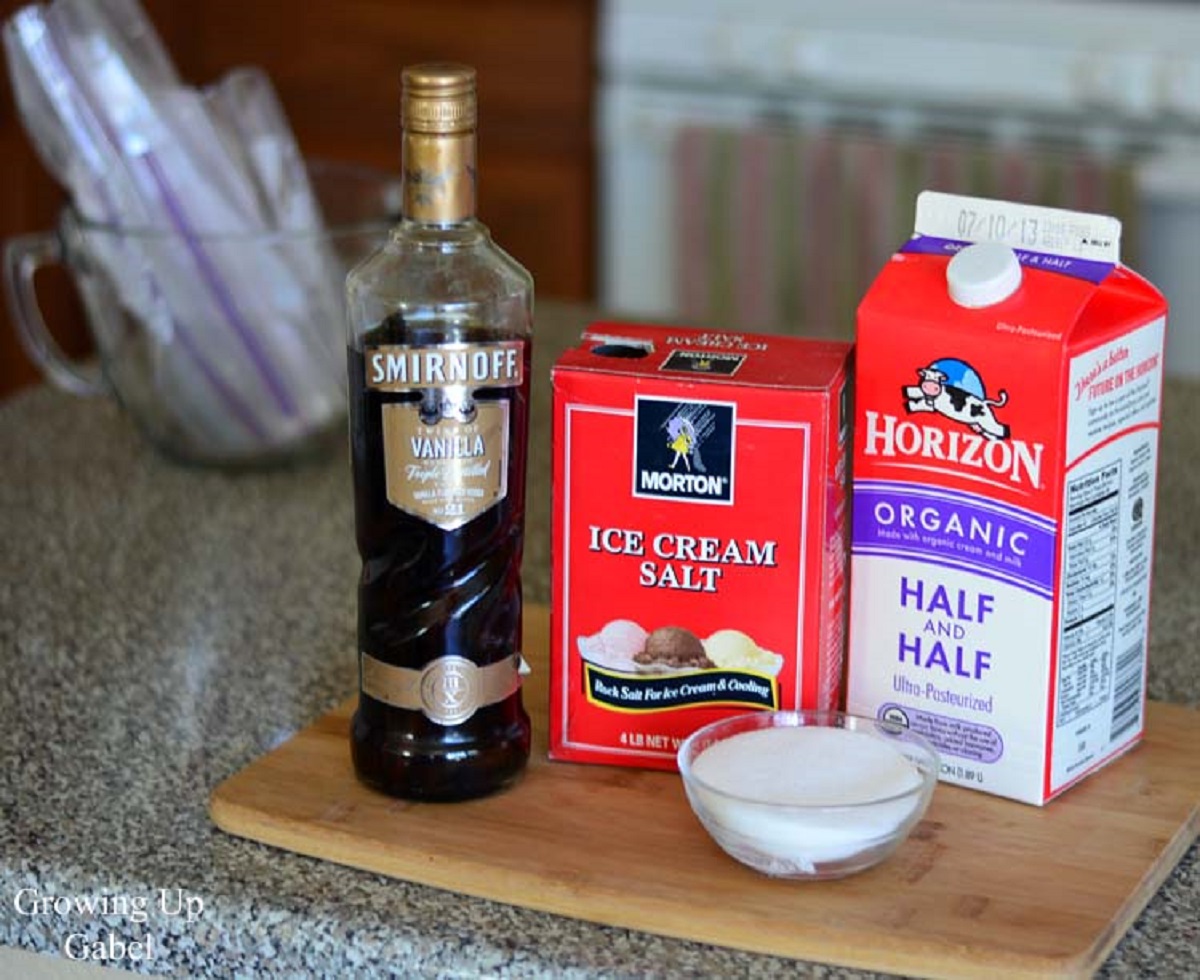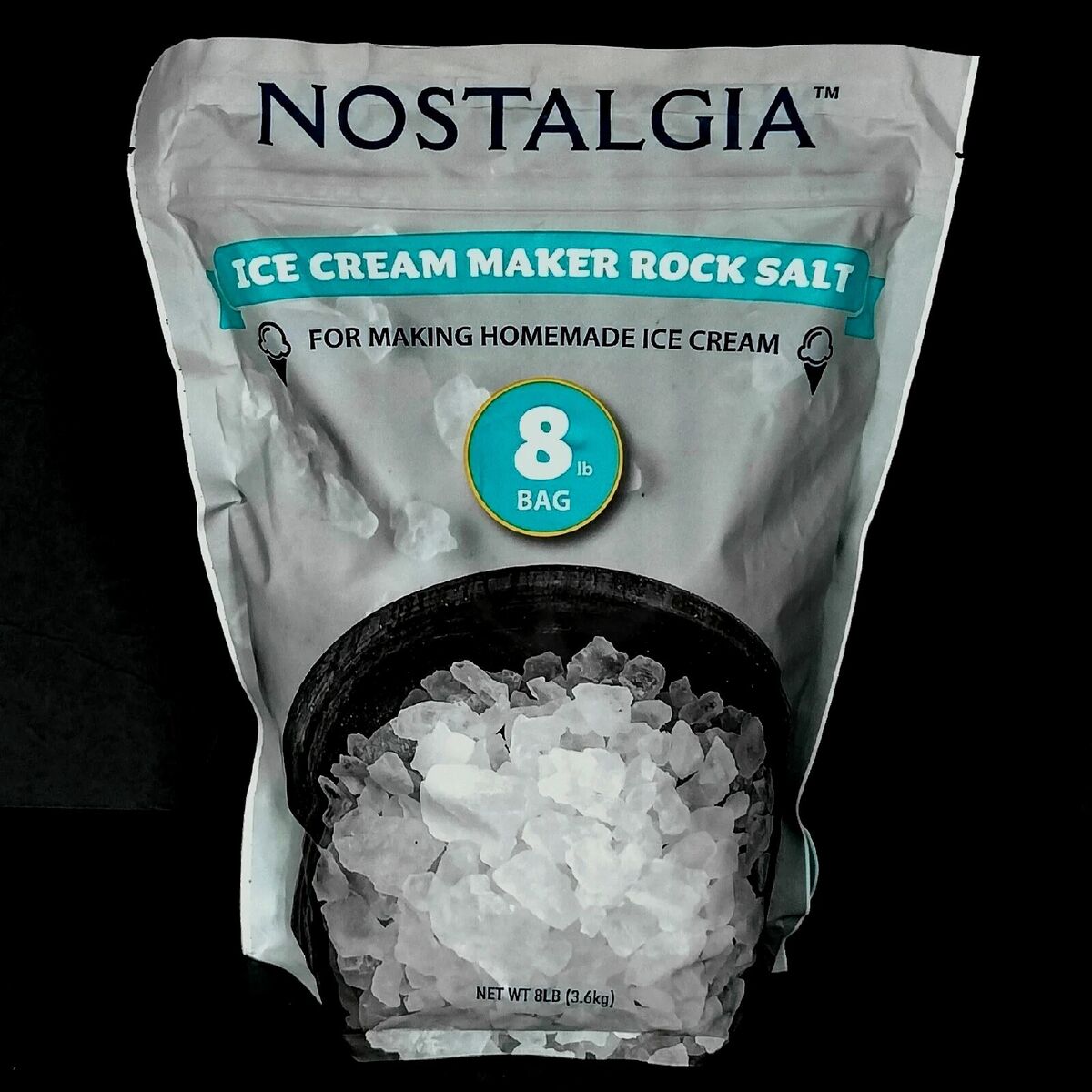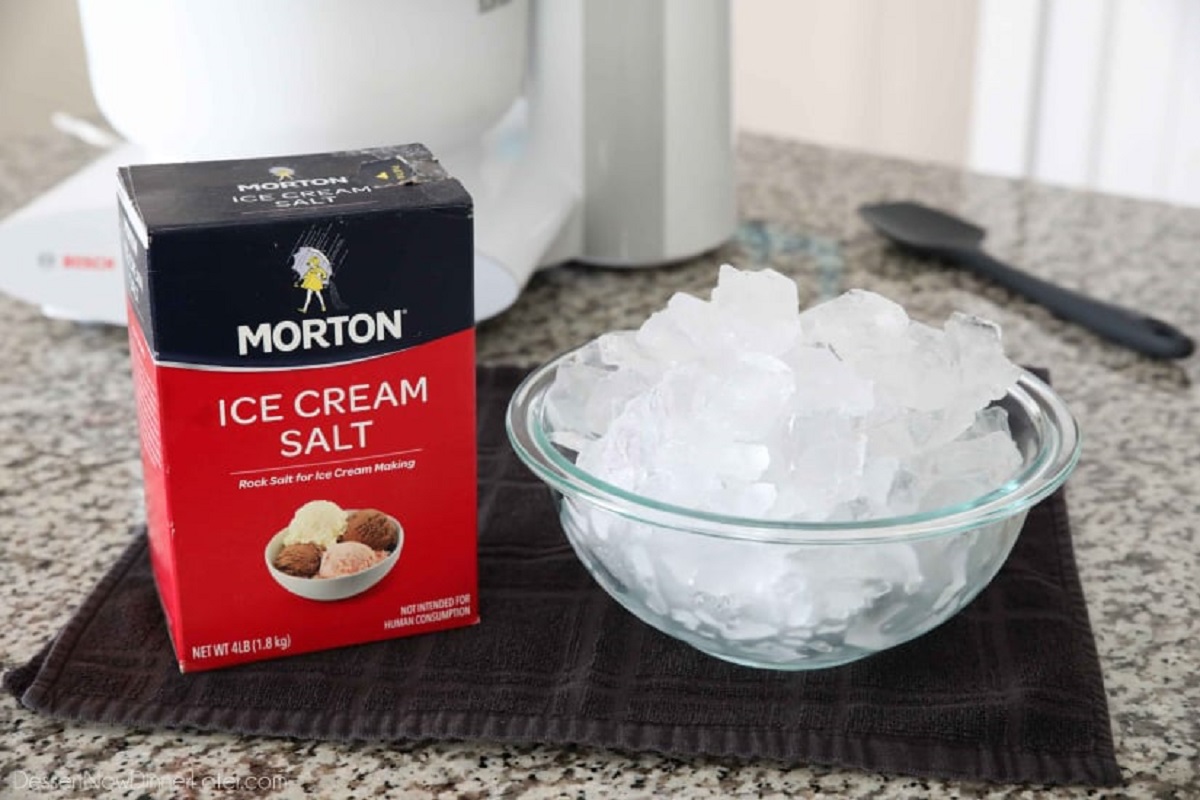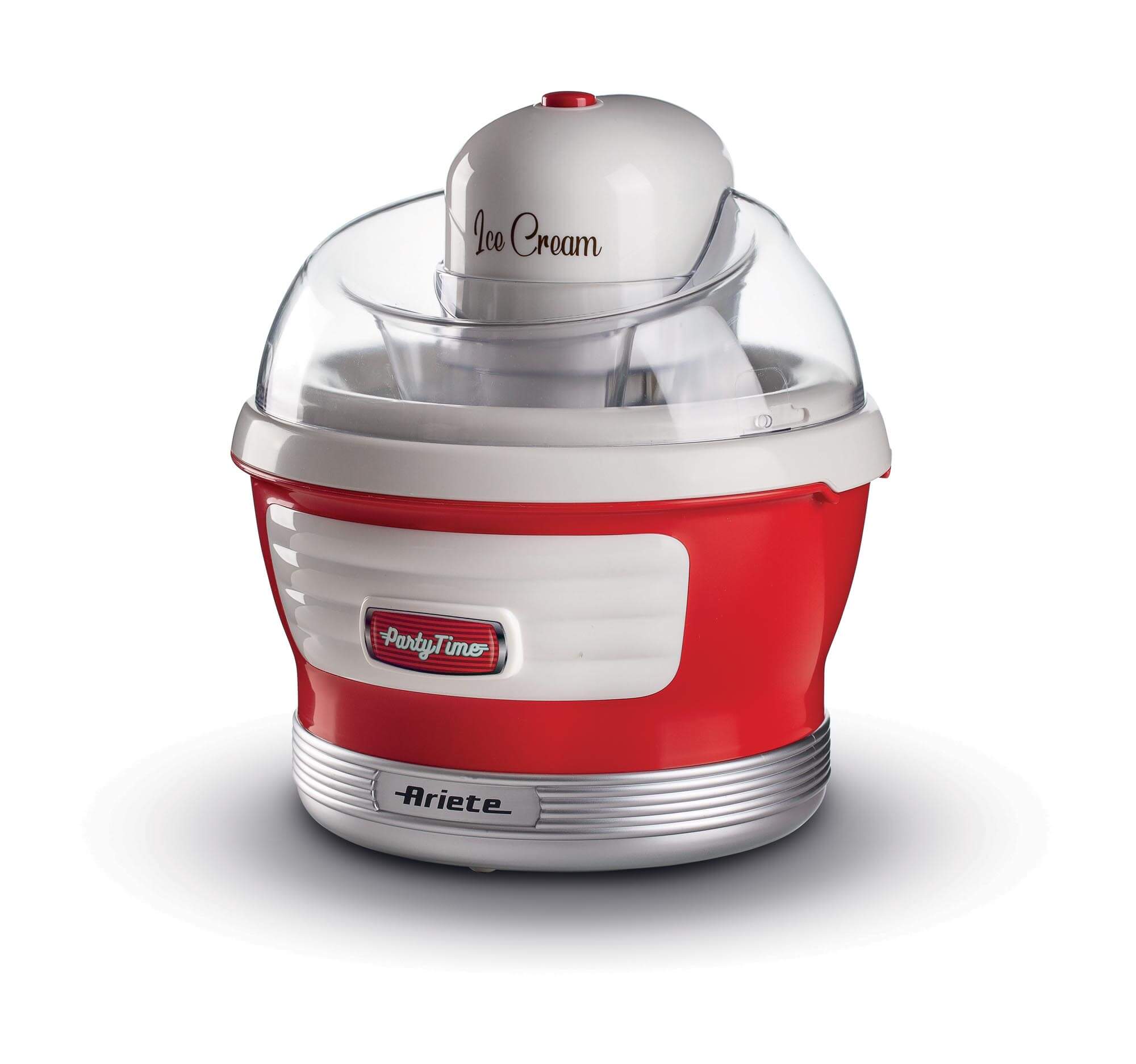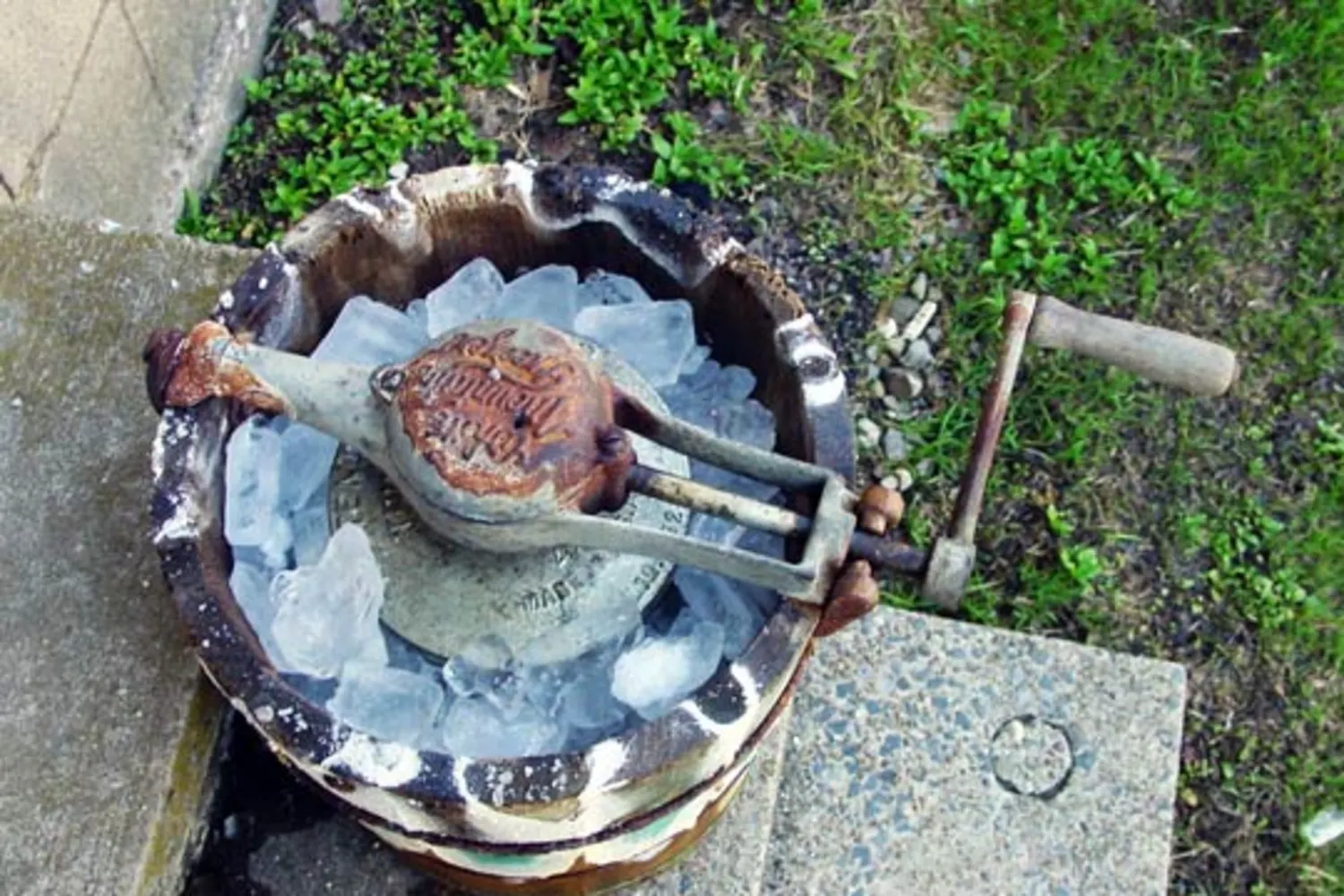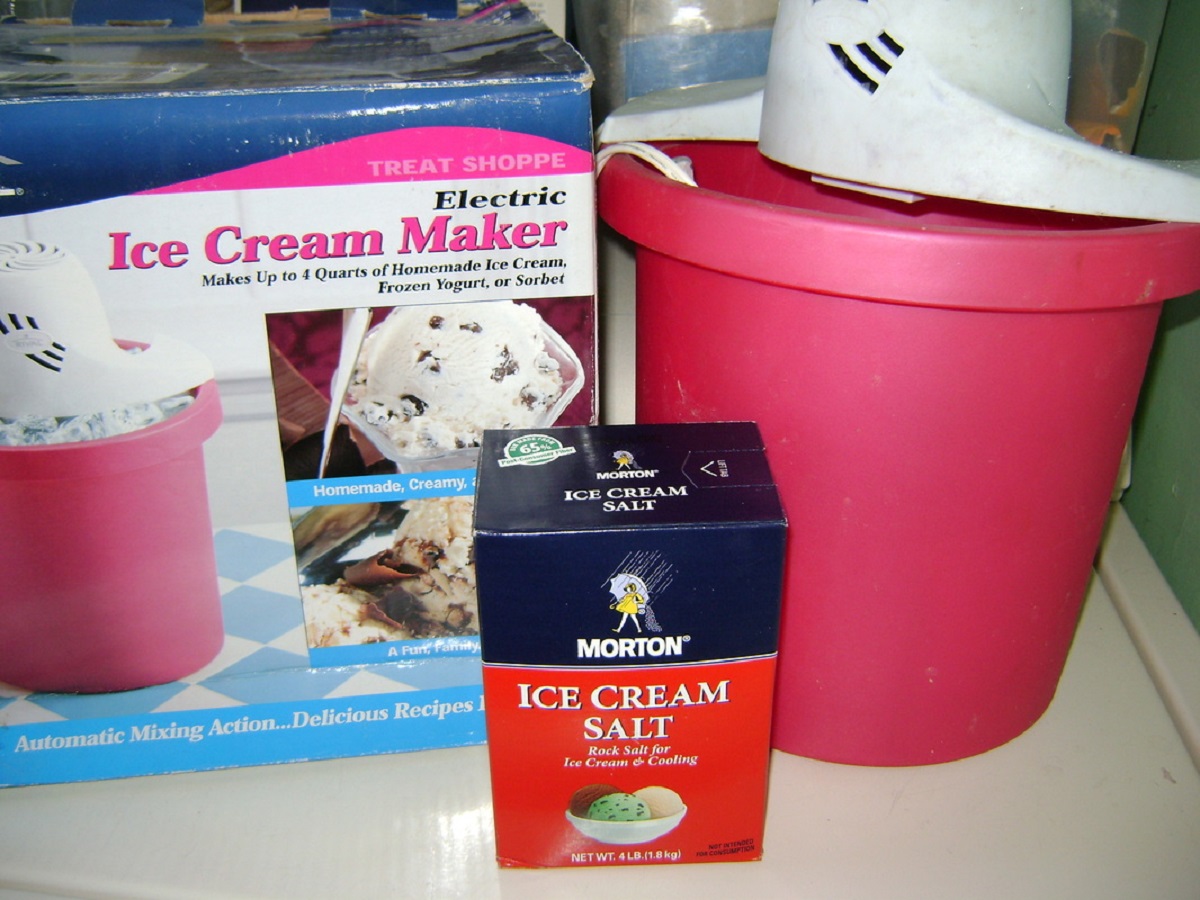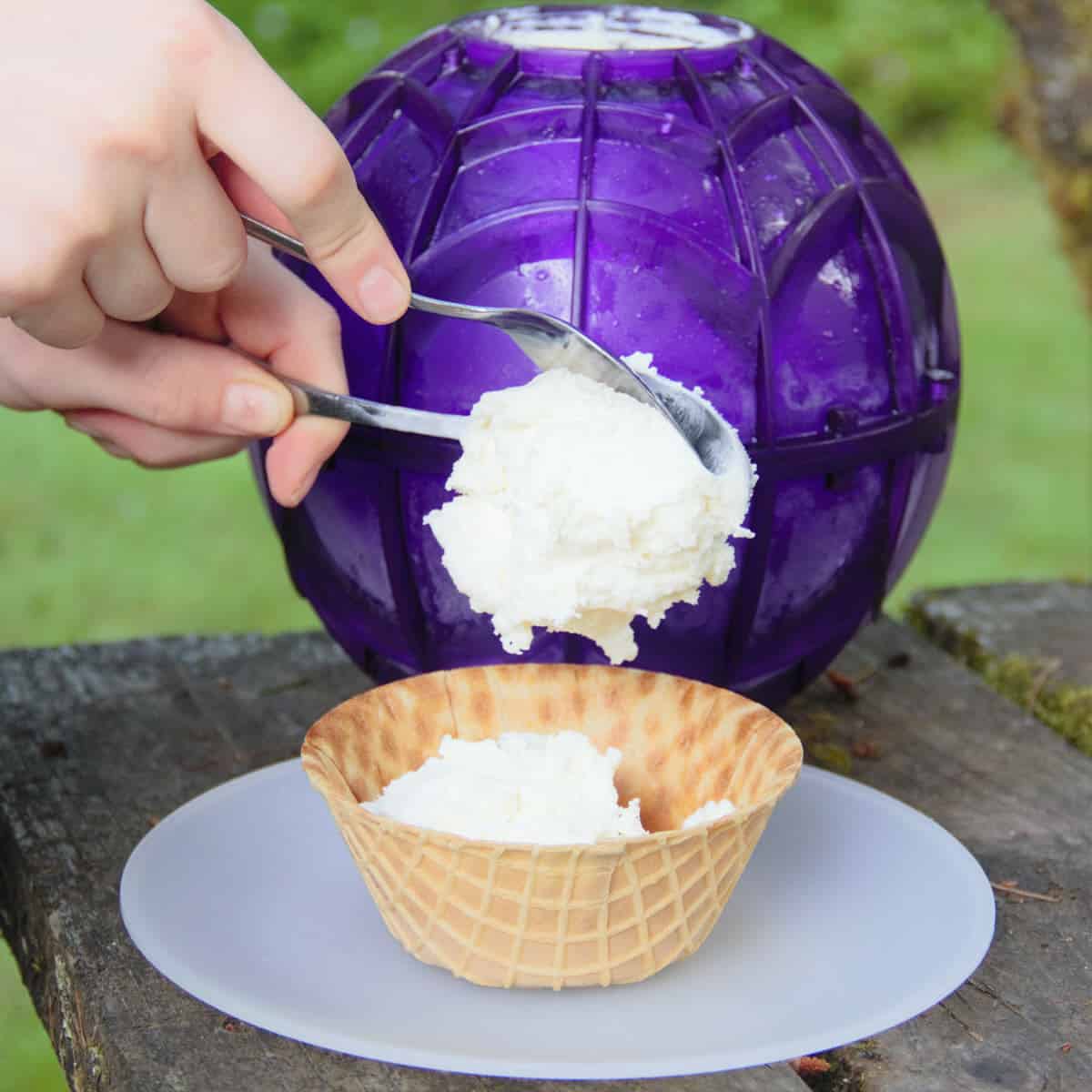Introduction
Welcome to the delicious world of homemade ice cream! Making ice cream at home is a rewarding and fun activity that allows you to customize the flavors and ingredients to your liking. While there are many factors that contribute to the perfect scoop of ice cream, one ingredient that plays a crucial role is salt.
The use of salt in the ice cream making process may seem unusual, but it serves an important purpose. Salt is responsible for lowering the freezing point of the ice surrounding the ice cream mixture. This lowering of the temperature allows the mixture to freeze at a faster rate, resulting in smoother and creamier ice cream.
But not all salts are created equal when it comes to using them in an ice cream maker. Different types of salt can have varying effects on the freezing process and the taste of the final product. In this article, we will explore the different types of salt that can be used in an ice cream maker and how to choose the right one for your homemade ice cream.
From common table salt to exotic Himalayan salt, each type of salt brings its own unique characteristics to the ice cream making process. Understanding the differences between these salts will allow you to make an informed decision when it comes to choosing the best option for your ice cream creations.
So, if you’re ready to dive into the wonderful world of salt and ice cream making, let’s explore the different types of salt that you can use in your ice cream maker!
Salt in Ice Cream Making
When it comes to making ice cream, salt plays a crucial role in the freezing process. It may seem counterintuitive to add salt to ice cream, but it actually helps to lower the freezing point of the ice surrounding the ice cream mixture. This allows the mixture to reach a colder temperature and freeze faster, resulting in a smoother and creamier texture.
By creating a super-chilled environment, the salt helps to freeze the ice cream mixture evenly and quickly. Without salt, the ice cream mixture would take much longer to freeze, leading to larger ice crystals and a grainy texture.
But how does this process work? When salt is added to ice, it causes the ice to melt at a lower temperature. The melting ice absorbs heat from its surroundings, including the ice cream mixture. As a result, the mixture gets colder and freezes more efficiently.
It’s important to note that the salt itself does not directly come into contact with the ice cream mixture. Instead, it creates a brine solution when mixed with the melting ice. This brine solution has a lower freezing point than plain water, allowing the ice cream mixture to freeze at a faster rate.
In addition to aiding the freezing process, salt also affects the texture and taste of the ice cream. It helps to lower the freezing point without making the ice cream too salty. The right amount of salt can enhance the flavors in the ice cream, balancing out the sweetness and adding a subtle savory note.
Now that we understand the role of salt in ice cream making, let’s explore the different types of salt that can be used in an ice cream maker.
Types of Salt
When it comes to choosing the right salt for your ice cream maker, there are several options to consider. Each type of salt offers its own unique characteristics that can affect the flavor, texture, and overall quality of your homemade ice cream. Let’s take a closer look at some of the most commonly used types of salt:
1. Table Salt
Table salt, also known as iodized salt, is the most common and readily available type of salt. It is typically fine-grained and highly refined, with added iodine to boost its nutritional value. While table salt can be used in ice cream making, it is important to use it sparingly due to its high concentration of sodium. Using too much table salt can lead to excessively salty ice cream.
2. Kosher Salt
Kosher salt has a coarse texture and is commonly used in koshering meats. Unlike table salt, it does not contain any additives such as iodine. Kosher salt is a popular choice for many chefs and home cooks due to its clean taste and ability to enhance flavors without overpowering them. It dissolves easily and evenly, making it a good option for ice cream making.
3. Sea Salt
Sea salt is harvested from evaporated seawater and retains some minerals and trace elements. It comes in various textures, such as fine, coarse, and flake salt. Sea salt has a more distinct and complex flavor compared to table salt. It can add a subtle briny taste to your ice cream, enhancing the overall flavor profile.
4. Himalayan Salt
Himalayan salt is a pink-colored rock salt that is mined from the Khewra Salt Mine in Pakistan. It is known for its high mineral content and unique flavor. Himalayan salt can add a hint of mild sweetness to your ice cream, complementing the sweetness of the other ingredients. It is available in fine or coarse textures and can be used as a decorative finishing salt as well.
These are just a few examples of the types of salt that you can use in your ice cream maker. Each salt brings its own distinct taste and texture to your homemade treats. Experimenting with different salts can add a new level of depth and complexity to your ice cream creations.
Now that we have explored the different types of salt available, let’s discuss how to choose the right salt for your ice cream maker.
Table Salt
Table salt, also known as iodized salt, is the most commonly used type of salt in households. It is made by refining salt from underground salt deposits and then adding iodine to it. Table salt is typically fine-grained and dissolves easily, making it convenient for various culinary purposes, including ice cream making.
When using table salt in your ice cream maker, it’s important to keep in mind that it has a high concentration of sodium. Therefore, it’s recommended to use it sparingly to avoid making your ice cream overly salty. Adding a pinch or two of table salt to your ice cream mixture can help enhance the flavors and balance out the sweetness.
Table salt is a readily available and affordable option for home ice cream making. However, some people may prefer to use other types of salt due to personal taste preferences or dietary considerations.
If you prefer a milder taste in your ice cream or have dietary restrictions related to sodium intake, you might consider using a different type of salt such as kosher salt or sea salt. These alternatives offer a lower sodium content and can still contribute to the freezing and flavor-enhancing properties of salt in ice cream making.
Ultimately, the choice between table salt and other types of salt comes down to personal preference and dietary needs. Experimenting with different salts can be an exciting way to discover new flavors and textures in your homemade ice cream creations.
Now that we have explored table salt, let’s dive into the next type of salt – kosher salt.
Kosher Salt
Kosher salt is a type of salt that is commonly used in the process of koshering meat. Unlike table salt, which undergoes a fine-grinding process, kosher salt has a larger and coarser grain size. It gets its name from its use in the koshering process, which involves drawing out blood from meat according to Jewish dietary laws.
When it comes to ice cream making, kosher salt has gained popularity among chefs and home cooks for several reasons. Its larger grain size makes it easy to handle and sprinkle, and it dissolves quickly and evenly in liquids. Additionally, kosher salt has a pure and clean taste, without any additives like iodine or anti-caking agents, which can sometimes affect the flavor of the ice cream.
One of the advantages of using kosher salt in ice cream making is its ability to enhance the flavors without overpowering them. Due to its coarse texture, kosher salt can add a delicate crunch and a burst of flavor to your homemade ice cream. It can help balance out the sweetness and bring out the other ingredients’ natural flavors, creating a more harmonious taste profile.
When using kosher salt, it’s important to adjust the quantity according to your taste preference. Start with a small amount and gradually increase if desired. Remember, a little bit goes a long way, so it’s better to be conservative with the amount of salt you add to avoid making your ice cream too salty.
Kosher salt is readily available in most grocery stores and is a versatile option for various culinary applications, including ice cream making. Its clean taste, ease of use, and flavor-enhancing qualities make it a popular choice among home ice cream enthusiasts.
Now that we have learned about kosher salt, let’s move on to explore another type of salt – sea salt.
Sea Salt
Sea salt is a type of salt that is obtained by evaporating seawater. It is known for its distinct flavor and coarser texture compared to table salt. Unlike table salt, which undergoes extensive processing that strips it of natural minerals, sea salt retains trace elements and minerals from the ocean, giving it a unique taste profile.
When it comes to using sea salt in ice cream making, it can add a subtle briny flavor that enhances the overall taste of the ice cream. The delicate flavor nuances of sea salt can complement the other ingredients in your ice cream, providing a more complex and well-rounded flavor experience.
Sea salt is available in different grain sizes, from fine to coarse. The finer varieties can easily dissolve in the ice cream mixture, while the coarser grains can provide a pleasant crunch and bursts of saltiness when sprinkled as a topping or mixed into the ice cream during the churning process.
Another advantage of using sea salt is the natural and unrefined quality it offers. Sea salt is minimally processed compared to table salt, which means it contains fewer additives or anti-caking agents. This can contribute to a purer and more authentic flavor in your homemade ice cream.
When incorporating sea salt into your ice cream recipe, it’s important to consider the intensity of the saltiness. Sea salt can vary in salinity, so it’s recommended to start with smaller quantities and adjust according to your taste preference. Remember, you can always add more salt, but you can’t take it out once it’s mixed into the ice cream mixture.
Sea salt is a popular choice among chefs and cooking enthusiasts due to its unique flavor profile and natural qualities. It can provide a delightful twist to your homemade ice cream, resulting in a delightful blend of sweet and savory flavors.
Now that we have discovered the wonders of sea salt, let’s move on to our final type of salt – Himalayan salt.
Himalayan Salt
Himalayan salt, also known as pink salt, is a type of rock salt that is harvested from the Khewra Salt Mine in the Punjab region of Pakistan. It gets its distinctive pink hue from trace minerals, such as iron, potassium, and magnesium, that are naturally present in the salt.
When it comes to using Himalayan salt in ice cream making, it offers a unique flavor and visual appeal. The subtle, mild sweetness of Himalayan salt can add an interesting twist to your ice cream, enhancing the overall taste profile. The minerals present in this salt can also contribute to a more complex and nuanced flavor in your homemade treat.
Himalayan salt can be found in both fine and coarse grain sizes, allowing you to choose the texture that suits your preferences. The larger crystals can be used as a decorative finishing salt, adding visual interest and a satisfying crunch to your ice cream when sprinkled on top.
One of the remarkable features of Himalayan salt is its trace mineral content. Advocates of this salt claim that it offers various health benefits due to these minerals. However, it’s important to note that the quantities of minerals present in Himalayan salt are relatively small, and the impact on your overall health may be minimal when used in ice cream making.
When using Himalayan salt in your ice cream, it’s important to consider its saltiness level. The flavor of Himalayan salt is generally milder compared to other salts, so you may need to use slightly more in your recipe to achieve the desired level of saltiness. Experimentation with the amounts will help you find the right balance for your taste buds.
Himalayan salt has gained popularity not only for its unique flavor but also for its aesthetically pleasing appearance. Using this salt in your ice cream can introduce a touch of elegance and sophistication to your homemade desserts.
Now that we have explored the unique qualities of Himalayan salt, it’s time to move on and discuss how to choose the right salt for your ice cream maker.
Choosing the Right Salt for Your Ice Cream Maker
Now that you’re familiar with the different types of salt available for ice cream making, it’s important to consider a few factors when choosing the right salt for your ice cream maker.
1. Taste Preference: Consider your personal taste preferences when selecting a salt for your ice cream. Each type of salt offers a distinct flavor profile, ranging from mild and subtle to briny and complex. Think about the flavor notes you want to enhance in your ice cream and choose a salt that complements those flavors.
2. Texture: The texture of the salt can also impact your ice cream experience. Finer salts will dissolve quickly, while coarser salts can provide a delightful crunch. Consider how you want the salt to interact with the texture of your ice cream and choose accordingly.
3. Sodium Content: If you have dietary restrictions related to sodium intake, it’s important to consider the sodium content of the salt you choose. Table salt typically has a higher sodium content compared to other salts. Opting for lower-sodium options like kosher salt or sea salt can be a healthier choice.
4. Availability and Cost: Consider the availability and cost of the salt. Table salt is widely available and affordable, while specialty salts like Himalayan salt may be more expensive and less readily accessible. Take into account your budget and accessibility when making your decision.
5. Experimentation: Don’t be afraid to experiment and try different salts in your ice cream recipes. Each type of salt can bring its own unique qualities to the frozen treat. You may discover new and exciting flavors by exploring different salts in your ice cream making journey.
Ultimately, the choice of salt for your ice cream maker will depend on your personal preferences, dietary needs, and desired flavor profile. Whether you opt for the familiarity of table salt, the clean taste of kosher salt, the subtle brininess of sea salt, or the mild sweetness of Himalayan salt, each salt can contribute to a delicious and customized ice cream experience.
Now that you have a better understanding of how to choose the right salt for your ice cream maker, it’s time to put your newfound knowledge into practice and embark on a flavorful ice cream-making adventure!
Conclusion
Salt plays a vital role in the process of making homemade ice cream. It helps lower the freezing point of the ice surrounding the ice cream mixture, resulting in a smoother and creamier texture. By understanding the different types of salt available and their unique characteristics, you can enhance the flavors and overall quality of your ice cream creations.
Table salt, with its fine texture and high sodium content, can be used in moderation to balance out the sweetness of the ice cream. Kosher salt, known for its clean taste and easy dissolvability, can add a delicate crunch and enhance the flavors without overpowering them. Sea salt, with its briny notes and various textures, can provide a subtle yet distinct flavor profile to your ice cream. And Himalayan salt, with its mild sweetness and trace mineral content, can offer a unique taste experience along with an elegant touch.
When choosing the right salt for your ice cream maker, consider factors such as personal taste preferences, texture, sodium content, availability, and experimentation. Each type of salt brings its own nuances to the ice cream, allowing you to customize the flavors and create a truly personalized dessert.
So, whether you stick to the familiar table salt, explore the clean taste of kosher salt, venture into the briny realm of sea salt, or embrace the subtle sweetness of Himalayan salt, the choice is yours. With a little experimentation and a touch of creativity, you can elevate your homemade ice cream to new heights of deliciousness.
Now, armed with your knowledge of salt and its impact on ice cream making, it’s time to grab your salt of choice, fire up your ice cream maker, and indulge in the pleasure of creating your own delectable frozen treats. Enjoy the journey, and may your ice cream adventures be filled with tasty success!







